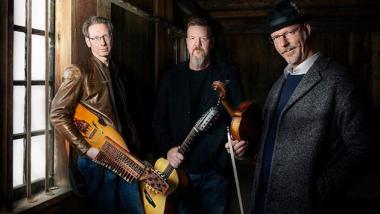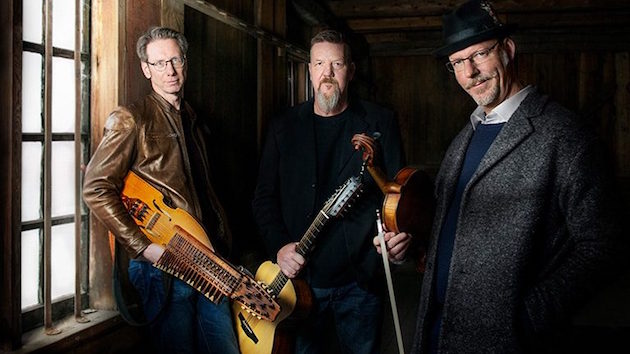
For centuries, classically-trained European musicians used vernacular folk music as an intriguing fount of melodic inspiration. Under the influence of musical nationalism, Kodály, Bartók, Vaughan Williams, Copland, Grant Still, Canteloube, Grieg, and many other composers routinely referenced traditional sources in their work, sometimes actively ferreting out old songs and tunes in the hinterlands and transcribing their discoveries personally. Even while elevating folk music as a special kind of truth, this treatment explicitly assigned those genres to a lower order of art.
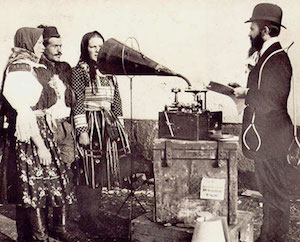
It’s tempting, even now, for those steeped in the lofty traditions of “high art” to see traditional music as a found object, and too often the true power and charm of the music is stripped away when divorced from its native instruments and settings and gussied up in chamber or orchestral settings. In that case, one is left with a hokey shell of the original music.
A more enlightened approach recognizes that traditional folk music is in a parallel musical universe rather than an inferior stratum that requires dressing up to make it legitimate. We caught a glimpse of that in the Bay Area last month when Rhiannon Giddens played banjo on stage with the San Francisco Symphony without a trace of irony.
Composers and performers around the globe are discovering ways to understand and integrate rather than simply appropriate traditional sources. In the Scandinavian countries in particular, composers such as Rikaard Nordraak, Pehr Henrik Nordgren, Pekka Kostiainen and others are striving for a more satisfying synthesis of their musical passions.
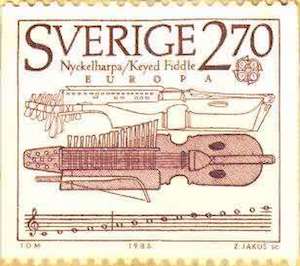
And this integration is a two-way street. Folk artists have always composed songs and tunes, but on the Scandinavian scene, the quantity and quality of composition by so-called folk-artists is mind boggling. This exchange between the formal and the vernacular is fostered by an acknowledgment that traditional music is worthy of respect on its own merits, an attitude supported at many levels of society. By way of example, traditional idioms are integrated into formal music education throughout Scandinavia, with advanced degrees in folk music offered though Sweden’s Royal College of Music, the Danish National Academy of Music, the Sibelius Academy of the University of the Arts in Helsinki, Finland, and Norway’s Ole Bull Academy.
SFCV has been covering the burgeoning new-music scene in Iceland (which is closely related, historically, to Denmark), and now we have a few suggestions for some mostly new music from Sweden, Finland, Norway, and Denmark, but from the folk side. The music on the dozen recordings listed below represents the cream of the traditional scene, and our selection is skewed to represent artists presenting original compositions. It’s by no means complete — the scene is bubbling over with energy and creativity — but it will get you in the door and help you find your way to the dance floor.
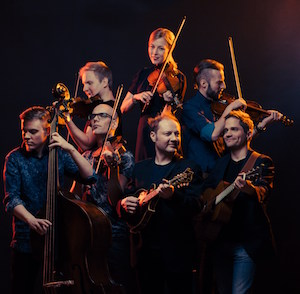
On these recordings, you encounter instruments that are usually imitated, not imported, in classical music. Not surprisingly, the most common instrument through the region is probably the fiddle — violin, fiol, fele, viulu — tuned and bowed like the modern violin.
The accordion is also universal, and there are many variations: keyboard, diatonic button, and chromatic button. The older-style button instruments are traditional in most regions, and the button arrangement provides more rhythmic snap and drive than the keyboard layout does. Many of the accordionists favor a free-bass system for the left-hand accompaniment, an innovation that allows more creative options than the conventional rows of preset chords.
The importance of that accompanying drone on the accordion extends to string players, too, and two of the most essential instruments are designed to provide drones and sympathetic overtones.
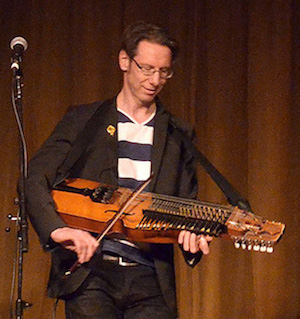
Sweden’s national instrument, the nyckelharpa (keyed fiddle, roughly) looks like a steampunk’s fantasy synthesizer. A relative of the French vielle and the English hurdy gurdy, the nyckelharpa is played with a short, arced bow, with the left hand on two to four rows of wooden keys that activate perpendicular stops to shorten the string at specific intervals along the scale. The modern, chromatic nyckelharpa has 16 strings: three melody strings, one drone string, and 12 strings that vibrate sympathetically with overtones of the melody notes. Earlier forms of the nyckelharpa had fewer keys arranged for diatonic patterns, fewer sympathetic strings, and fewer melody strings, but often made more use of drone strings. Iterations date back at least 600 years, and there are at least four variants of the layout commonly played today. The instrument nearly died out in the early 20th century, but a revival took off mid-century, and the instrument is now more popular than ever. To learn more, check out the American Nyckelharpa Association.
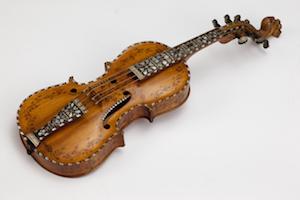
In Norway, the iconic instrument is the hardingfele (hardanger fiddle), which has the basic shape and setup of a standard violin, with five sympathetic “understrings” that provide its characteristic drones. There are more than 20 known tunings for the hardanger fiddle. The instrument traditionally sports applied ornaments, including elaborate carving on the peghead and around the purfling, with inlaid pearl and bone on the fingerboard. Yes, there is a Hardanger Fiddle Association of America with more details.
Other Scandinavian instruments include the kantele, a form of the Baltic box zither with anywhere from five to 40 strings and plucked with bare fingers. There are numerous traditional flutes played throughout the region, typically transverse wooden instruments with simple fingering. Of particular interest is the overtone flute (seljefløyte in Norwegian) made of either willow or birch (or in recent years, PVC tubing) with a fipple mouthpiece and no sound holes. Overtone flutes generate ethereal sounds based on the harmonic series of the individual instrument’s fundamental tone. The säckpipa is a Swedish bagpipe, a relatively soft instrument powered by either blowing into the bag or pumping it up with elbow-driven bellows.
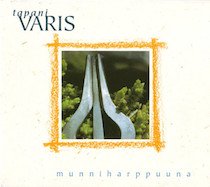
Particularly in Norway, the munnharpe (Jew’s harp or trump) is played as a serious instrument with its own traditions, revered makers, and an annual festival. There are variations in Denmark (mundharpe) and Finland (huuliparpu), too. Like the willow and birch flutes, the music made on a munnharpe is based on the overtones of the fundamental. Even though it’s essentially a one-note instrument, it is capable of incredibly complex rhythms and subtle harmonies in the right hands — and against the right teeth. Norwegian makers are renowned for the precision and clarity of their harps, and they are available in a wide range of concert pitches. To hear what’s possible on this mighty, little bit of steel, listen to Tapani Varis’s amazing 1996 Munnipappuuna release.
The traditional Scandinavian repertoire comprises primarily dance tunes, with the defining characteristic being the ubiquity of three-quarter time in most regions. These are not logy, oom-pah-pah waltzes, either. Dance tunes are typically played with a pronounced lift emphasizing the first and third pulse, but the rhythms are often syncopated and the melodic phrases carry across bar lines in ways that sometimes blur the strict dance rhythms. Polskas (not to be confused with polkas) in various forms are probably the most common dance tune, but there are dozens of other carefully delineated dance rhythms in three-quarter time as well as marches, airs, and walking tunes.
Let’s listen to some music.
Väsen
Brewed
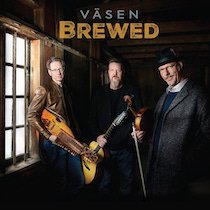
I first encountered Väsen at the Falun Folkmusik Festival in Sweden in the early ’90s. Rumor had it that they were the band to see, so I wandered over to where they were slated to perform and soon realized that there was no hope of getting in the door. In fact, there was no hope of getting anywhere near the door, which was packed with fans hoping for a chance to hear the hot ticket that night. I couldn’t hear a thing except the thunderous ovations that erupted after every piece of music. Disappointed, I wandered off to the CD tent, where I picked up a couple of their discs, which then remained in constant rotation on my Walkman for the remainder of the trip.
The trio — Olov Johansson on nyckelharpa, Mikael Marin on five-string viola, and Roger Tallroth on 12-string guitar — are consummate musicians, and their intuitive, virtuosic interplay is intoxicating. Johansson’s command of the nyckelharpa is widely regarded as an important factor in its renaissance. Väsen’s jaw-dropping performances have led many musicians to dub them “the best band in the world.” I wouldn’t disagree. All of their recordings are worth investigating, but why not start with their newest, Brewed, which features all original material. If you want to dig deeper, try the early Essence.
Marin/Marin
Tiden
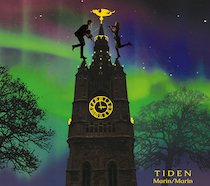
Twin fiddling is common through Scandinavia, but this pairing of five-string instruments is something special. Mikael Marin’s inventive viola lines provide the harmonic secret sauce in Väsen’s arrangements, and he is perfectly matched here with his musical partner and wife, Mia Marin, who perform as Marin/Marin. This duet delivers seemingly endless variations on the traditional and original tunes, effortlessly trading off melody, harmony, and accompaniment ideas. Their unique instrument pairing gives them a broader range than would be possible with two conventional fiddles. Tiden is their latest offering (2016), with 12 mostly original tunes in the traditional vein. Also check out their outstanding Småfolket from 2011.
Olov Johansson, Erika Lindgren Liljenstolpe, and Robert Larsson
Maskin
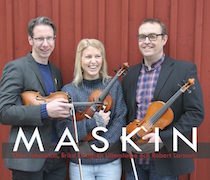
Johansson sets aside the nyckelharpa and picks up the fiddle to join two old fiddling friends in this brand-new set of high-energy tunes from the Uppland tradition. Recorded live before a small audience in a studio setting, this collection captures the feel of a great session in the kitchen, with three world-class fiddlers trading melodies, harmonies, and rhythmic drone accompaniment. This is probably the most straight-ahead sounding offering in this sampler.
Roger Tallroth and Scott Nygaard
Rosco
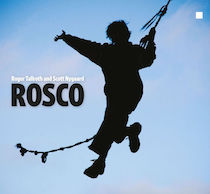
This playful two-guitar outing by Väsen’s Roger Tollroth and the Bay Area’s own flatpick wizard Scott Nygaard evolved from an impromptu-but-satisfying arrangement of a waltz the guitarists worked up at a festival where they were both appearing. Their individual approaches to the instrument are dramatically different. Nygaard’s crisp, flatpicked six-string styling is steeped in bluegrass and jazz. Tallroth has a more drone-based, chordal approach to his 12-string, which he typically plays in a unique open tuning (ADADAD). His lowest string is a fifth below a conventional guitar’s lowest note, which allows him to achieve a fat, bass-driven accompaniment style. The two find common ground on a playlist that embraces both Swedish and American folk tunes as well as tradition-grounded originals from each player. Guitars are front and center here, but fiddler Emma Reid, English born but now based in Sweden, sweetens the mix with her lovely, responsive playing throughout.
Jan Johansson
Jazz på svenska
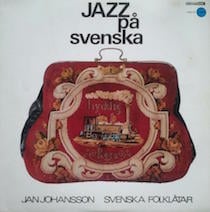
Swedish jazz pianist Jan Johansson played straight-ahead jazz, swing, and bebop, and was the first European invited to join the Jazz at the Philharmonic tour when Stan Getz tagged him as his preferred accompanist. His light, lilting touch is reminiscent of San Francisco jazz stylist Vince Guaraldi. From 1961 to 1968 he recorded over a dozen albums and composed music for films and TV shows before his life was cut short in an auto accident when he was just 37. He is best known for a series of innovative sessions where he recast traditional folk music in jazz settings. The classic disc is Jazz på svenska (Jazz in Swedish), where Johansson joined bassist Georg Riedel on 16 Swedish folk songs. Their gorgeous, delicate improvisations on the ancient tunes were a hit in Sweden and beyond, and the recording is Sweden’s best-selling jazz record ever — still in print 50 years later. Musik Genom Fyra Sekler offers more of the same with extended instrumentation, and Johansson did similar sessions with Russian and Hungarian folk tunes, the latter with jazz violinist Svend Asmussen. They are all great and all available at CD Baby’s Johansson page.
Timo Alakotila
Timo Alakotila & Piano
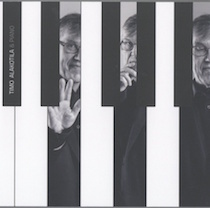
Timo Alakotila is one of the most in-demand musicians in Finland, and his tasteful piano and harmonium playing has graced hundreds of albums over the years. He is a prolific composer whose works are found on recordings throughout the Scandinavian folk scene. He has been a member of the seminal fiddle band JPP for 25 years, regularly performs and records with accordionist Maria Kalaniemi, with folk music quintet Troka, with British accordionist Karen Tweed, and with dozens of other artists from around the globe. Oh, and he is a professor of arts at the Sibelius Academy and also teaches at Limerick University, Vijandi Culture College, and other schools. On this 2016 solo piano release, Alakotila takes the limelight and shines on 14 original compositions that range from folk-inflected tunes to introspective studies and even a tango.
Frigg
Frost on Fiddles
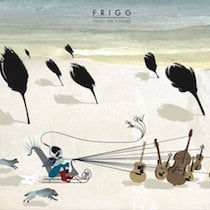
Seven of Finland’s hottest musicians — four fiddles with guitar, mandolin, and bass — meld traditional Finnish dance music with American bluegrass, rock, and jazz in an energetic fusion they call “Nordgrass.” Three of the members are of the Järvelä dynasty of fiddlers, and they all grew up absorbing the deep roots of the Kaustinen region. It’s impeccably tight acoustic ensemble playing offered with wit and a wink. The group has released seven previous recordings, all worth hearing, and their 2017 release, Frost on Fiddles, is garnering great reviews and is currently residing in seventh place on the World Music Charts Europe.
Maria Kalaniemi and Eero Grundström
Svalan
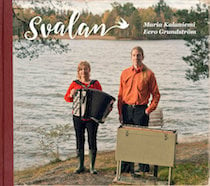
Maria Kalaniemi, a master of free-bass button accordion, is one of Finland's leading contemporary musicians and a teacher at the Sibelius Academy. She is an accomplished composer who is successfully bridging the folk, classical, and new-music worlds. Her trad cred was established early on as member of several leading folk groups and a number of group and solo recordings emphasizing the traditional repertoire. Her newest offering interprets Finnish-Swedish ballads, songs about the sea, passionate tangoes, “frenzied minuets from Jepua,” and her own compositions. Eero Grundström accompanies Kalniemi on the harmonium and co-produced the recording. The pairing of the accordion and harmonium provides an eerie foil for Kalaniemi’s often mournful vocals. Photographer Harri Tolvanen provides visual commentary on the music with photo collages of scenes around Northern Karelia.
Annbjørg Lien
Drifting Like A Bird
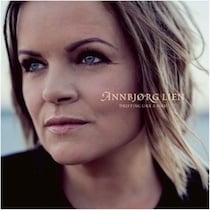
Annbjørg Lien made her mark in 1988 at the age 17 with a recording of tunes she collected from the Kjellstad family of fiddlers. Over the next several years, she released some essential hardanger fiddler recordings as a solo artist and with her band Bukkene Bruse. In more recent years she has been composing original music for traditional-instrument ensembles inspired by such diverse themes as the Russian legend of Baba Yaga and the ancient Thai tradition of launching lanterns in remembrance of the dead. Drifting Like a Bird was commissioned by the North Sea Festival in Farsund. With an all-star roster of supporting musicians, Lien’s original songs and tunes explore the powerful emotions and activities of life on and by the sea.
Ånon Egeland, Bruce Molsky, and Arto Järvelä
Rauland Rambles
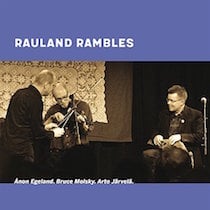
Music from the Appalachian side of the fjord. A gorgeous set from this Norwegian-American-Finish ensemble suffers none of the awkwardness that sometimes beleaguers cross-cultural meetings. The three fiddlers are each considered national treasures in their own countries, and they find simpatico grooves on material that ranges from “Shaking Off the Acorns” and “Cumberland Gap” to “Sjøfløytehamborg.” Some of the tunes are set very traditionally. At other moments, there are unexpected delights. On “Ruben,” the birch flute evokes Ruben’s lonesome train whistle, and a jaunty clawhammer banjo keeps perfect three-quarter time on “Harvelandsvalsen.”
Habadekuk
Mollevit
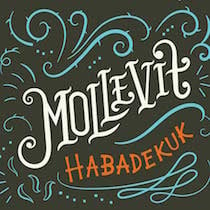
Hot off the press, Mollevit marks the 10-year anniversary of the ebullient Habadekuk, a festive mélange of traditional Danish dance music and big-band influences. The award-winning ensemble features the wonderful Kristian Bugge on fiddle and Peter Eget Hansen on accordion and harmonica, who provide the rock-solid melodic core. A rhythm section of bass, drums, and keyboards lays down appropriate grooves and a horn section comprising trumpet, trombone, and saxophone provides beautiful counterpoint, delicate, atmospheric lines, and full-bore, big-band blasts of brass. The deceptively simple-sounding tunes evolve in complex, often-surprising ways. Fans of Quebec’s La Bottine Souriante will feel right at home with Habadekuk. Contagious fun!

